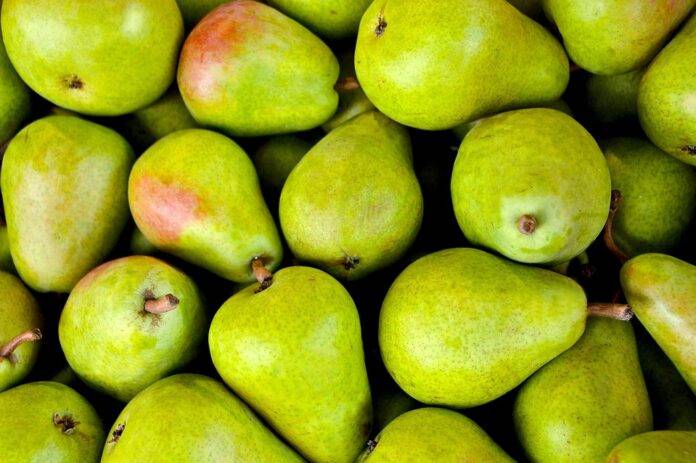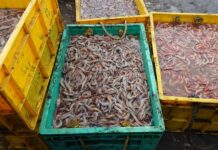Introduction
The global pear industry has seen significant growth over the years, with various countries excelling in pear production. This report delves into the top 10 pear producers and leading global companies, highlighting their contributions to the industry and providing detailed financial and production data.
Global Pear Production Overview
Pears are cultivated in temperate climates worldwide, with China being the largest producer, followed by the United States, Italy, and Argentina. In 2022, global pear production was estimated at approximately 25 million metric tons, reflecting a steady increase over the past decade.
1. China
China dominates the global pear market, producing over 18 million metric tons annually, accounting for approximately 70% of total world production. Major pear varieties cultivated in China include the Asian pear (Nashi) and the European pear. The country’s extensive orchards and favorable climate contribute to its leading position.
Financial Data:
– Annual Production: 18 million metric tons
– Export Value: $1.2 billion in 2022
– Major Export Markets: Japan, South Korea, and Southeast Asia
2. United States
The United States ranks second in pear production, with approximately 800,000 metric tons produced annually. The Pacific Northwest, particularly Oregon and Washington, is known for its high-quality pear varieties such as Bartlett, Anjou, and Bosc.
Financial Data:
– Annual Production: 800,000 metric tons
– Export Value: $260 million in 2022
– Major Export Markets: Canada, Mexico, and the European Union
3. Italy
Italy ranks third, producing around 600,000 metric tons of pears each year. The Italian pear industry is known for its focus on quality, with varieties like Abate Fetel and Conference being popular both domestically and internationally.
Financial Data:
– Annual Production: 600,000 metric tons
– Export Value: $200 million in 2022
– Major Export Markets: Germany, France, and the United Kingdom
4. Argentina
Argentina is a significant player in the global pear market, producing approximately 600,000 metric tons annually. The country’s varieties, particularly the Williams and Packham’s Triumph, are highly sought after in international markets.
Financial Data:
– Annual Production: 600,000 metric tons
– Export Value: $150 million in 2022
– Major Export Markets: Brazil, the United States, and Europe
5. Spain
Spain produces around 400,000 metric tons of pears each year, focusing on both domestic consumption and exports. The country’s climate is conducive to growing various pear types, including the popular Conference and Limonera varieties.
Financial Data:
– Annual Production: 400,000 metric tons
– Export Value: $120 million in 2022
– Major Export Markets: France, Germany, and the Netherlands
6. South Korea
South Korea’s pear production is estimated at approximately 250,000 metric tons per year, with the Asian pear being a staple in the country’s fruit market. Korean pears are known for their crisp texture and juiciness, making them a favorite among consumers.
Financial Data:
– Annual Production: 250,000 metric tons
– Export Value: $60 million in 2022
– Major Export Markets: Japan and the United States
7. Turkey
Turkey produces about 230,000 metric tons of pears annually, with a focus on both fresh and processed pear products. The country has been increasing its export capabilities, particularly in the European market.
Financial Data:
– Annual Production: 230,000 metric tons
– Export Value: $50 million in 2022
– Major Export Markets: Germany and the United Kingdom
8. France
France is known for its diverse range of pear varieties, producing around 200,000 metric tons each year. French pears, especially the Conference and Beurré Hardy, are popular in European markets.
Financial Data:
– Annual Production: 200,000 metric tons
– Export Value: $40 million in 2022
– Major Export Markets: Germany, the Netherlands, and Belgium
9. Chile
Chile produces approximately 180,000 metric tons of pears annually, focusing on both fresh consumption and export markets. The country’s climate allows for a long growing season, enhancing the quality of its pear varieties.
Financial Data:
– Annual Production: 180,000 metric tons
– Export Value: $30 million in 2022
– Major Export Markets: United States, Brazil, and Europe
10. New Zealand
New Zealand rounds out the top ten pear producers, with an annual production of about 150,000 metric tons. The country is known for its high-quality, premium pear varieties that are well-received in international markets.
Financial Data:
– Annual Production: 150,000 metric tons
– Export Value: $25 million in 2022
– Major Export Markets: Australia, the United States, and Asia
Leading Global Companies in the Pear Industry
The pear industry is supported by several key companies that play a crucial role in production, distribution, and export. Below is a list of leading global companies in the pear sector.
1. Del Monte Foods
Del Monte Foods is one of the largest producers of canned and fresh fruit, including pears. The company operates globally and emphasizes sustainable practices in its production processes.
Financial Data:
– Annual Revenue: $1.5 billion
– Pear Production: 100,000 metric tons
2. Dole Food Company
Dole is another major player in the fruit industry, known for its wide variety of fresh produce, including pears. The company has a strong global presence and focuses on quality and sustainability.
Financial Data:
– Annual Revenue: $4.5 billion
– Pear Production: 150,000 metric tons
3. Sunkist Growers
Sunkist Growers is a well-known agricultural cooperative that represents thousands of farmers, including pear growers. The cooperative is committed to providing high-quality fruits to consumers.
Financial Data:
– Annual Revenue: $1 billion
– Pear Production: 80,000 metric tons
4. Stemilt Growers
Stemilt Growers is a leading fruit grower and shipper in the United States, specializing in apples and pears. The company has a strong commitment to sustainability and innovative farming practices.
Financial Data:
– Annual Revenue: $500 million
– Pear Production: 60,000 metric tons
5. California Giant Berry Farms
Although primarily known for berries, California Giant Berry Farms also produces pears. The company emphasizes quality and sustainability in its farming practices.
Financial Data:
– Annual Revenue: $300 million
– Pear Production: 40,000 metric tons
Challenges Facing the Pear Industry
Despite its growth, the pear industry faces several challenges, including climate change, competition from other fruits, and changing consumer preferences. These factors can impact production volumes and market prices.
1. Climate Change
The effects of climate change, such as unpredictable weather patterns and increased pests, pose significant risks to pear production. Farmers must adapt to these changes to maintain their yields.
2. Competition
The pear industry competes with other fruits, such as apples and citrus, which can affect market share and prices. Marketing strategies and product differentiation are essential to attract consumers.
3. Consumer Preferences
Changing consumer preferences towards health and wellness can impact pear demand. Producers and marketers must be proactive in promoting the health benefits of pears to maintain market interest.
Future Outlook for the Pear Industry
The future of the pear industry looks promising, with opportunities for growth in emerging markets and innovative farming practices. As consumer demand for fresh, healthy produce continues to rise, the pear industry is well-positioned to capitalize on these trends.
1. Market Expansion
Emerging markets in Asia and Africa present significant opportunities for pear producers. As incomes rise and consumers become more health-conscious, demand for fresh fruits, including pears, is expected to increase.
2. Sustainable Practices
Sustainability is becoming increasingly important in agriculture. Pear producers who adopt sustainable farming practices and promote their environmental benefits will likely gain a competitive edge in the market.
3. Technological Advancements
Advancements in technology, such as precision farming and improved supply chain logistics, can enhance production efficiency and reduce waste. These innovations will be crucial for maintaining profitability in a competitive market.
Conclusion
The global pear industry is a dynamic and growing sector, with top producers like China, the United States, and Italy leading the way. The contributions of key companies and the challenges they face will shape the industry’s future. With a focus on sustainability and innovation, the pear market is poised for continued growth and success in the years to come.
Read: The Global Pear Industry – A Comprehensive Report




